 Thanks to innovative manufacturers like Logitech, we’ve had mice (mouses?) with more buttons than a Cinderella reunion, but just when you thought that the humble mouse couldn’t get any more new features, Digital Cowboy have announced the world’s first dual pointer mouse, the DCT-DPM1.
Thanks to innovative manufacturers like Logitech, we’ve had mice (mouses?) with more buttons than a Cinderella reunion, but just when you thought that the humble mouse couldn’t get any more new features, Digital Cowboy have announced the world’s first dual pointer mouse, the DCT-DPM1.
It looks like an ordinary mouse but has an unusual trick up its sleeve – when you activate the button on the left hand side of the mouse a second cursor appears on screen!
Now, this may sound like something developed by the Ministry of Bonkers Ideas on their annual ‘Let’s Take Acid’ day, but there might just be a method to their madness.
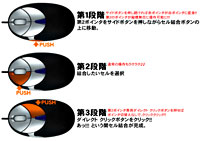 The DCT-DPM1 is aimed at people with multiple desktop displays, where users currently have to scroll across hefty distances when they jump from screen to screen.
The DCT-DPM1 is aimed at people with multiple desktop displays, where users currently have to scroll across hefty distances when they jump from screen to screen.
With the new double cursor mouse, you can ‘park’ the first cursor on a point on the one screen, and then work on the other screen as usual.
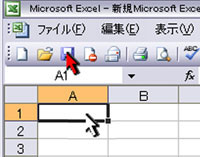 Flipping between the two work areas is then simply a case of activating the mouse button to access the ‘parked’ cursor, without any need for a marathon of cross-screen scrolling.
Flipping between the two work areas is then simply a case of activating the mouse button to access the ‘parked’ cursor, without any need for a marathon of cross-screen scrolling.
And if you’re constantly having to input text into two different areas, the dual cursor idea could also be a winner, although we’re not sure if our limited brains could cope with two cursors on the go.
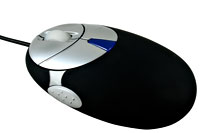 We’ve no idea when, or even if, this bi-cursorary device will be making it to the UK, but it is possible we could be witnessing the next evolution of the mouse.
We’ve no idea when, or even if, this bi-cursorary device will be making it to the UK, but it is possible we could be witnessing the next evolution of the mouse.
Either that or it’s another really crap idea.
Mouse specs:Product name: DCT-DPM1 (JAN:4543183505031)
Colour: Black
The number of pointers: 2
The number of mouse buttons: 5 (the scroll button is included)
Resolution: 800dpi
Interface: USB & PS/2 (at the time of attachment adapter use)
OS: WindowsXp/2000
Size: Approximately 107×55×29mm
Cable length: 150cm
Accessory:USB -> PS/2 conversion adapter
Driver: CD
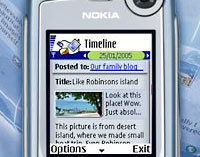 Nokia has launched Nokia Lifeblog 2.0, an updated version of their photo-blogging offering.
Nokia has launched Nokia Lifeblog 2.0, an updated version of their photo-blogging offering. Well, that’s how we’d describe the process, but Nokia has a more flowery interpretation, insisting that adding the extra information is “rendering them as part of the rich tapestry of items that make up your personal Nokia Lifeblog timeline.”
Well, that’s how we’d describe the process, but Nokia has a more flowery interpretation, insisting that adding the extra information is “rendering them as part of the rich tapestry of items that make up your personal Nokia Lifeblog timeline.”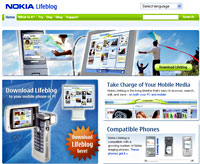 “With imaging becoming an integral part of mobile devices, the way people approach photography is changing. You are able to capture events and create memories in a spontaneous way as your device is always with you,” gushed Mikko Pilkama, whose job title is surely unpronounceable after five beers: Director, Nokia Nseries See New, Multimedia, Nokia.
“With imaging becoming an integral part of mobile devices, the way people approach photography is changing. You are able to capture events and create memories in a spontaneous way as your device is always with you,” gushed Mikko Pilkama, whose job title is surely unpronounceable after five beers: Director, Nokia Nseries See New, Multimedia, Nokia. “Press one if you’re a
“Press one if you’re a 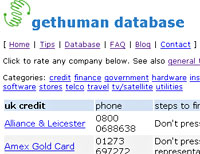 Here’s some example entries from the ‘gethuman’ UK database – obviously, we haven’t tested them all, but initial reports have been encouraging, but tell us how you got on.
Here’s some example entries from the ‘gethuman’ UK database – obviously, we haven’t tested them all, but initial reports have been encouraging, but tell us how you got on.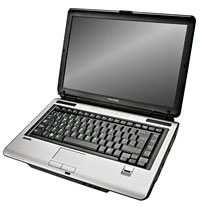 Toshiba is rolling out its first Satellite models with Intel Core Duo and Core Solo processors.
Toshiba is rolling out its first Satellite models with Intel Core Duo and Core Solo processors. The notebooks include Intel’s 945 Express chipset employing Intel Centrino Mobile Technology to reduce power consumption while and give a kick up the backside of the laptop’s graphics to wireless performance.
The notebooks include Intel’s 945 Express chipset employing Intel Centrino Mobile Technology to reduce power consumption while and give a kick up the backside of the laptop’s graphics to wireless performance.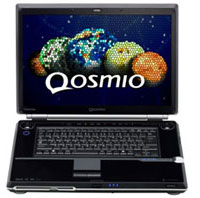 The Qosmio G30 is part is of Toshiba’s multimedia PC line and will come with a TV tuner and Dolby Home Theatre support.
The Qosmio G30 is part is of Toshiba’s multimedia PC line and will come with a TV tuner and Dolby Home Theatre support.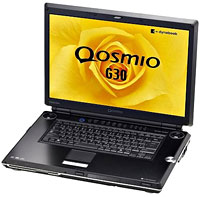 Backed by Toshiba and NEC, it faces heavy competition from the Blu-Ray corner, whose hard-hitting supporters include Sony, Matsushita, Panasonic and Samsung.
Backed by Toshiba and NEC, it faces heavy competition from the Blu-Ray corner, whose hard-hitting supporters include Sony, Matsushita, Panasonic and Samsung. There was a time when the word ‘dock’ only conjured up visions of dirty great harbours full of ships, cranes, an angry Marlon Brando and beefy tattooed blokes lugging great sacks around the place.
There was a time when the word ‘dock’ only conjured up visions of dirty great harbours full of ships, cranes, an angry Marlon Brando and beefy tattooed blokes lugging great sacks around the place. So long as your phone has a FM tuner, it can be activated as soon as you plonk the handset into the cradle, letting the MP001 double up as a home radio system – neat.
So long as your phone has a FM tuner, it can be activated as soon as you plonk the handset into the cradle, letting the MP001 double up as a home radio system – neat.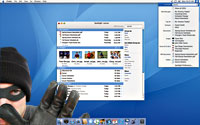 To find out how secure Apple’s OS X operating system is, a Swedish-based Mac fan set up his Mac Mini on the Internet, and invited hackers to try and break through the computer’s security and gain root control.
To find out how secure Apple’s OS X operating system is, a Swedish-based Mac fan set up his Mac Mini on the Internet, and invited hackers to try and break through the computer’s security and gain root control.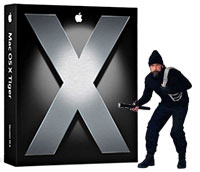 Dave Schroeder of the University of Wisconsin explained that because anyone logging on was allowed to set up a local account on the Swedish machine (accessed via ssh), the exercise was more like breaking into a different user account while sat behind the computer. And that is much easier then hacking into a fully protected system over the Internet.
Dave Schroeder of the University of Wisconsin explained that because anyone logging on was allowed to set up a local account on the Swedish machine (accessed via ssh), the exercise was more like breaking into a different user account while sat behind the computer. And that is much easier then hacking into a fully protected system over the Internet. There may be almost 76 million sites stuffed full of six billion pages of information vying for our attention on the Web, but it seems that most surfers only choose to visit six sites on a regular basis.
There may be almost 76 million sites stuffed full of six billion pages of information vying for our attention on the Web, but it seems that most surfers only choose to visit six sites on a regular basis.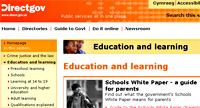 Sadly, it seems that the days of random surfing are coming to a close, with the vast majority of Web users (95 per cent) going online with a specific destination in mind.
Sadly, it seems that the days of random surfing are coming to a close, with the vast majority of Web users (95 per cent) going online with a specific destination in mind. Bringing together public services from across eleven Whitehall departments, visitors to Directgov can unearth a mountain of useful information and services, from renewing driving licences, car taxes or passports , locating local services like schools, childminders and recycling and even planning journeys on foot, by car or by public transport.
Bringing together public services from across eleven Whitehall departments, visitors to Directgov can unearth a mountain of useful information and services, from renewing driving licences, car taxes or passports , locating local services like schools, childminders and recycling and even planning journeys on foot, by car or by public transport.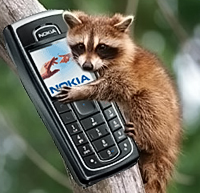 With a bonkers new naming strategy that suggests the creatives may have been on something stronger than caffeine, Orange have launched a new tariff that links customer behaviour with animal characteristics.
With a bonkers new naming strategy that suggests the creatives may have been on something stronger than caffeine, Orange have launched a new tariff that links customer behaviour with animal characteristics. Initially launching to Pay Monthly customers, the animal packages will be made available to Pay as you go customers later in the year.
Initially launching to Pay Monthly customers, the animal packages will be made available to Pay as you go customers later in the year.